 Bose TV Speaker Soundbar
Bose TV Speaker Soundbar

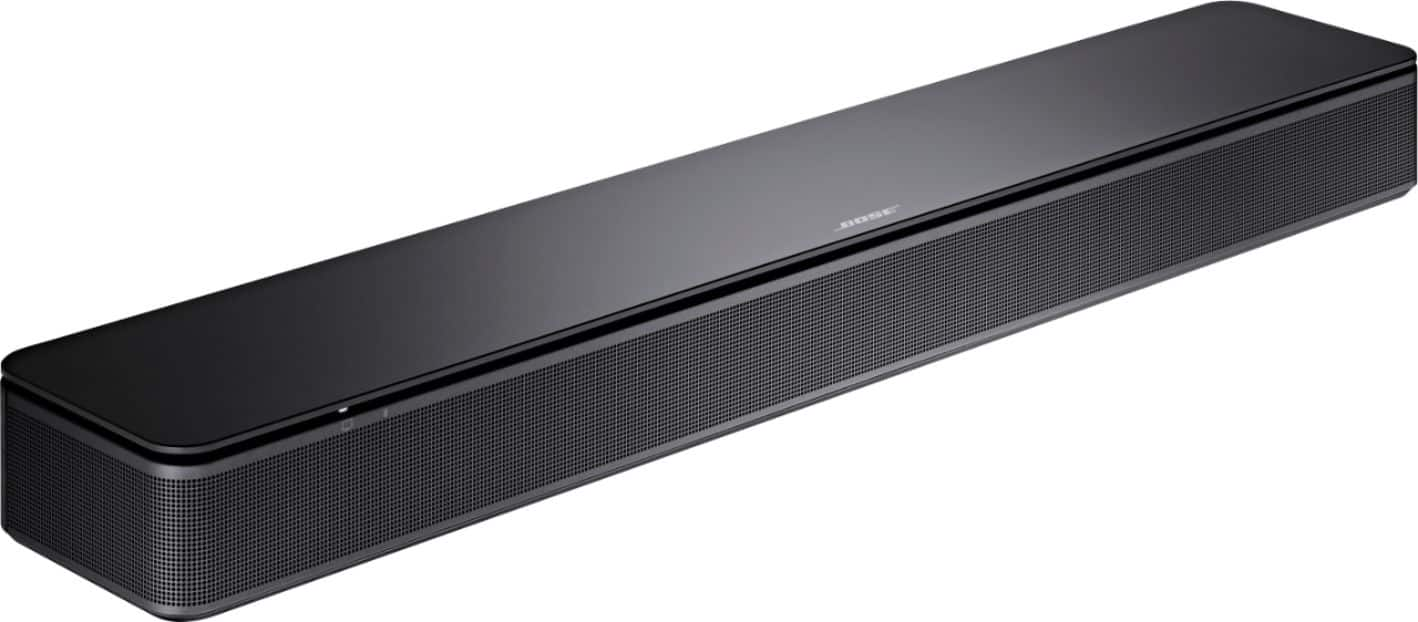
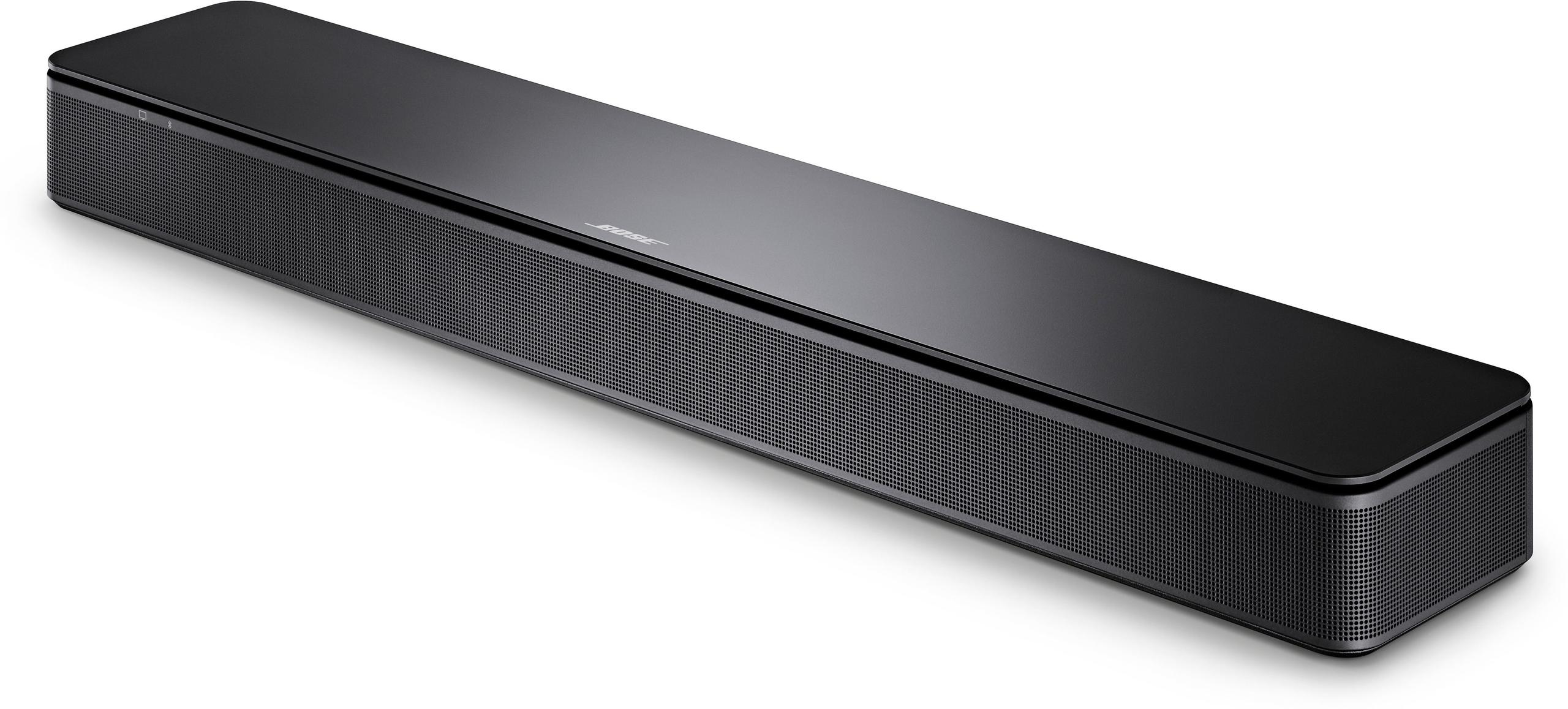


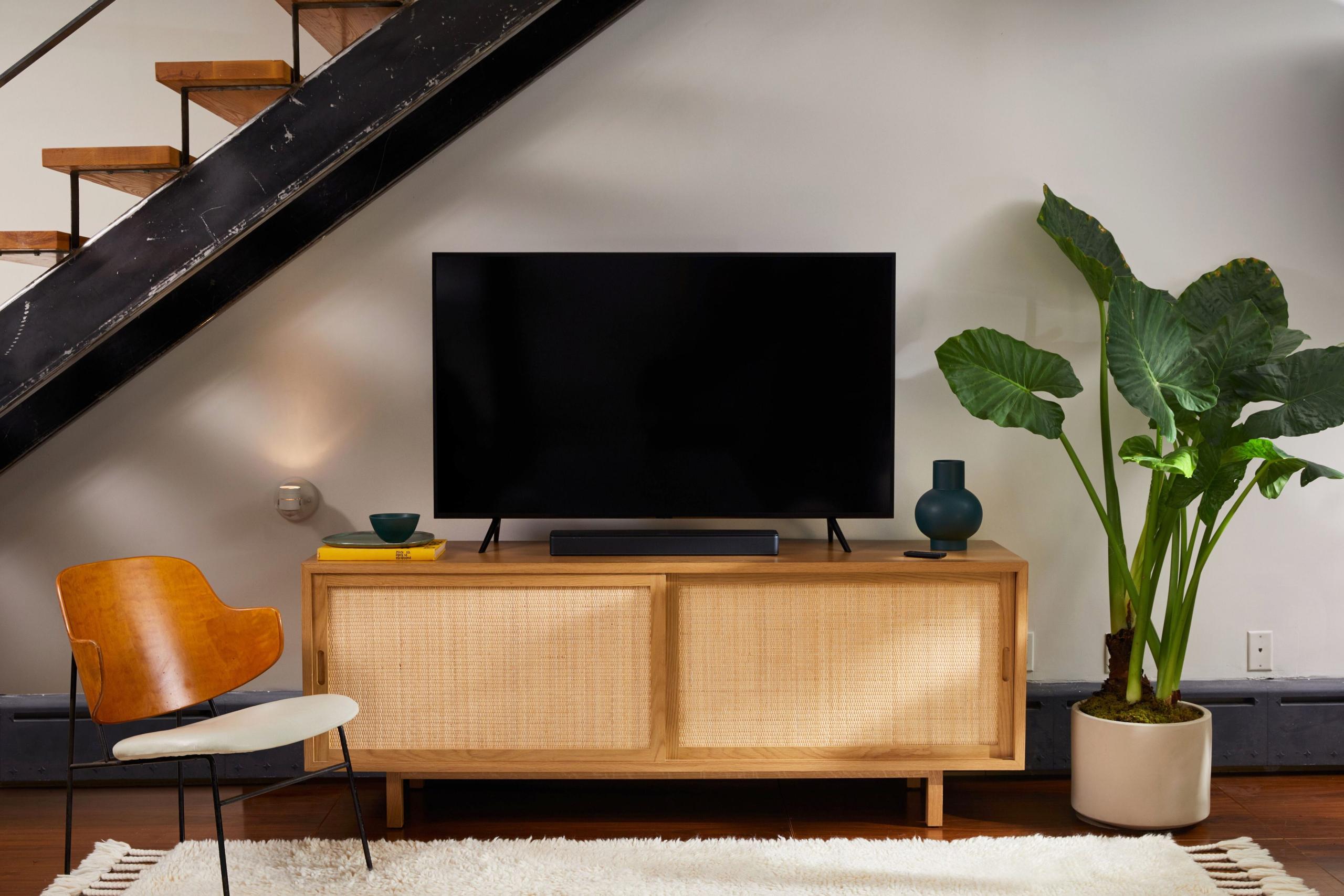
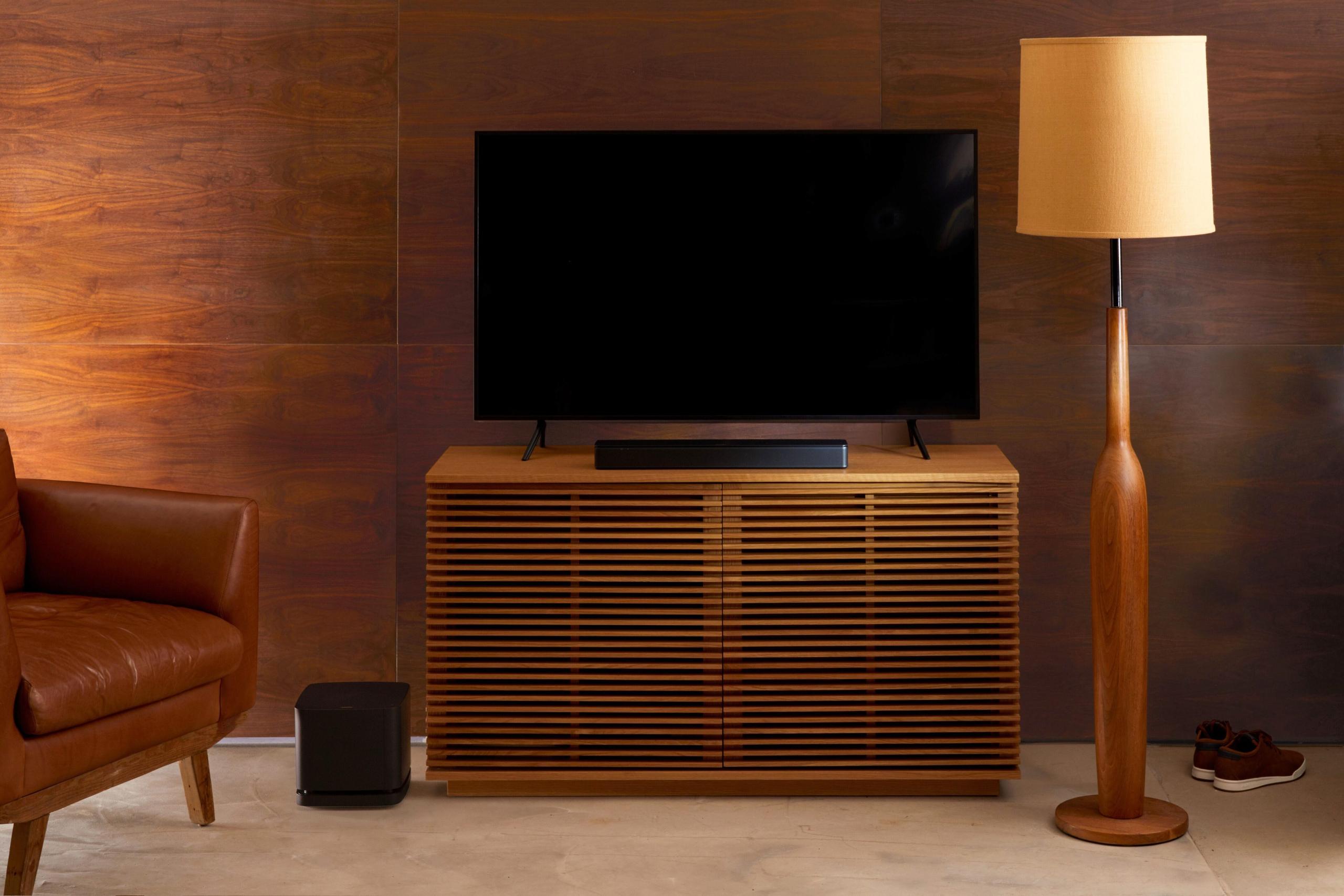
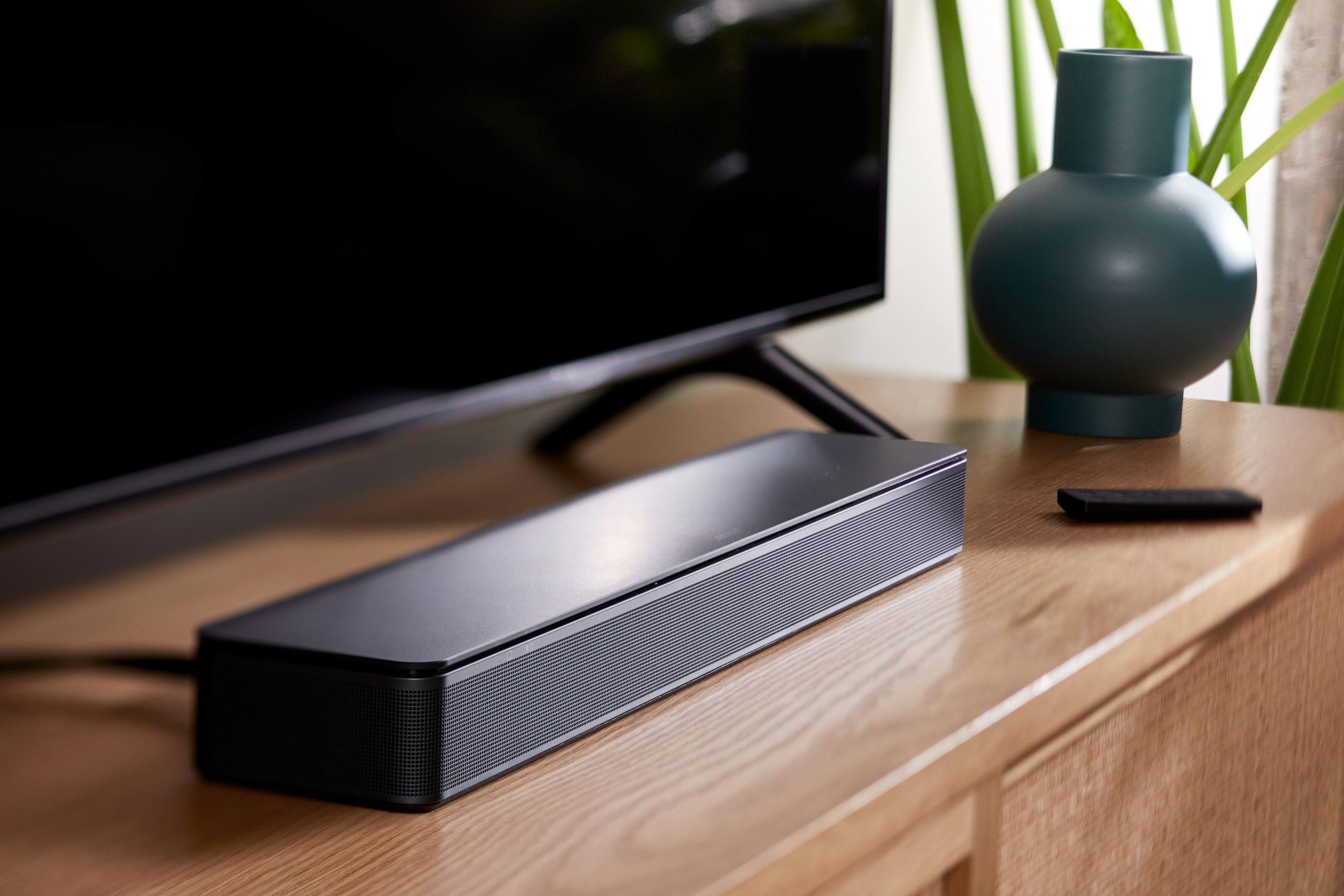

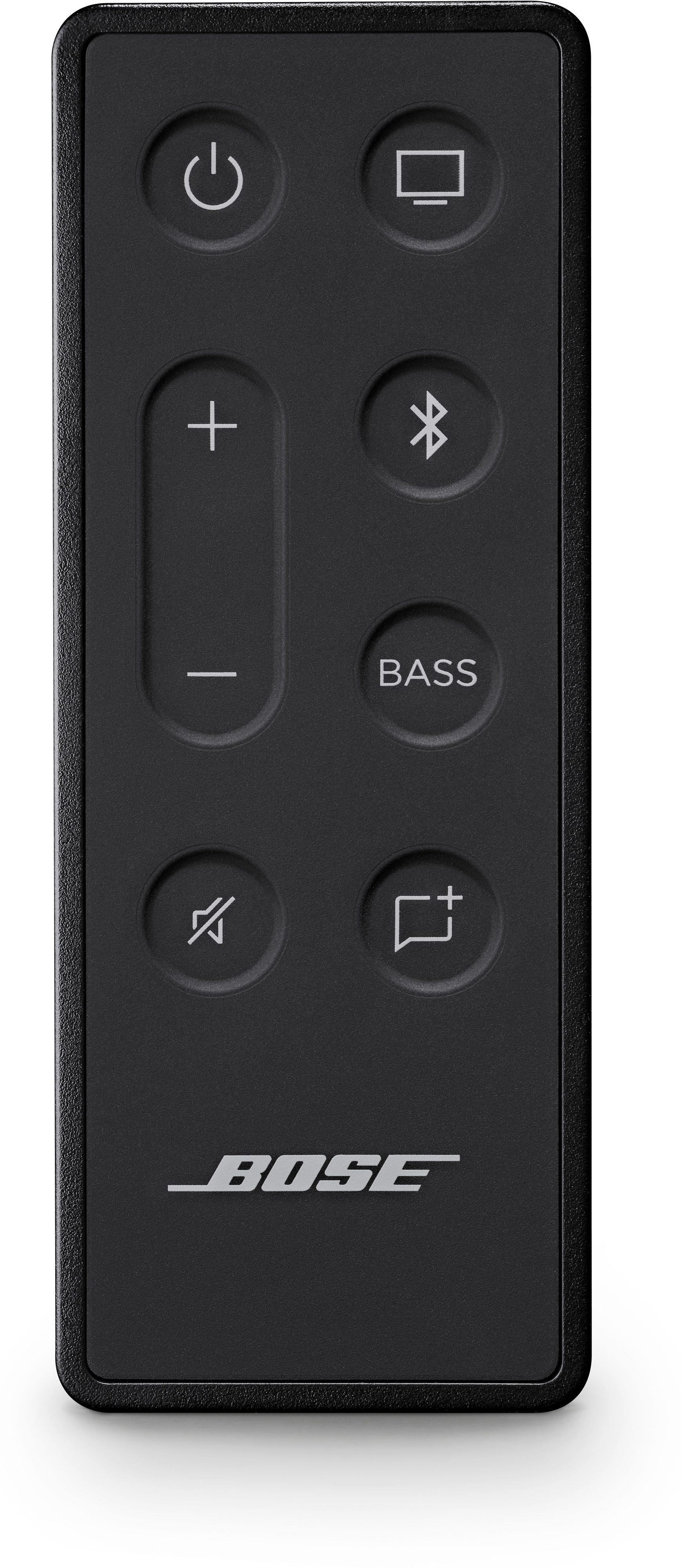
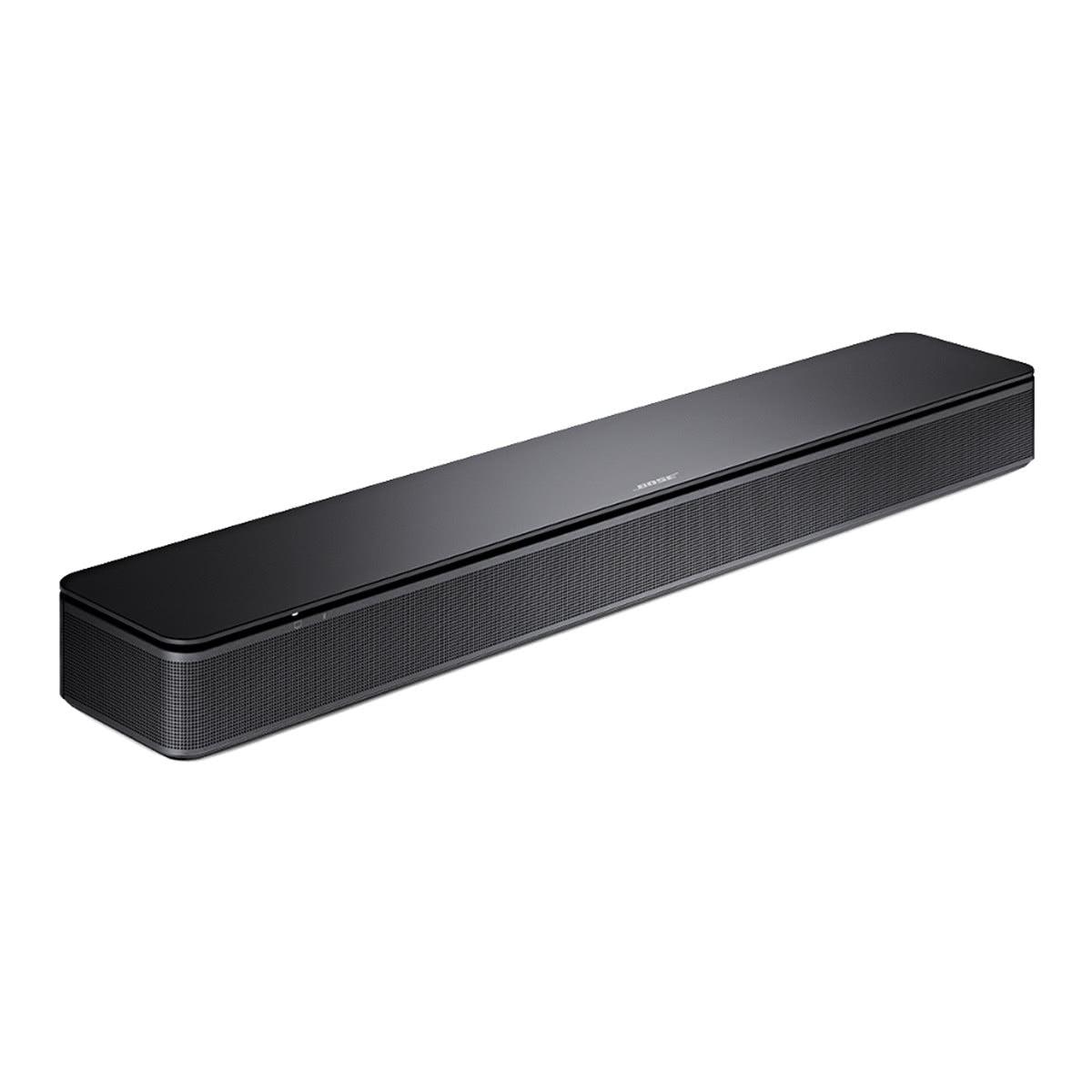
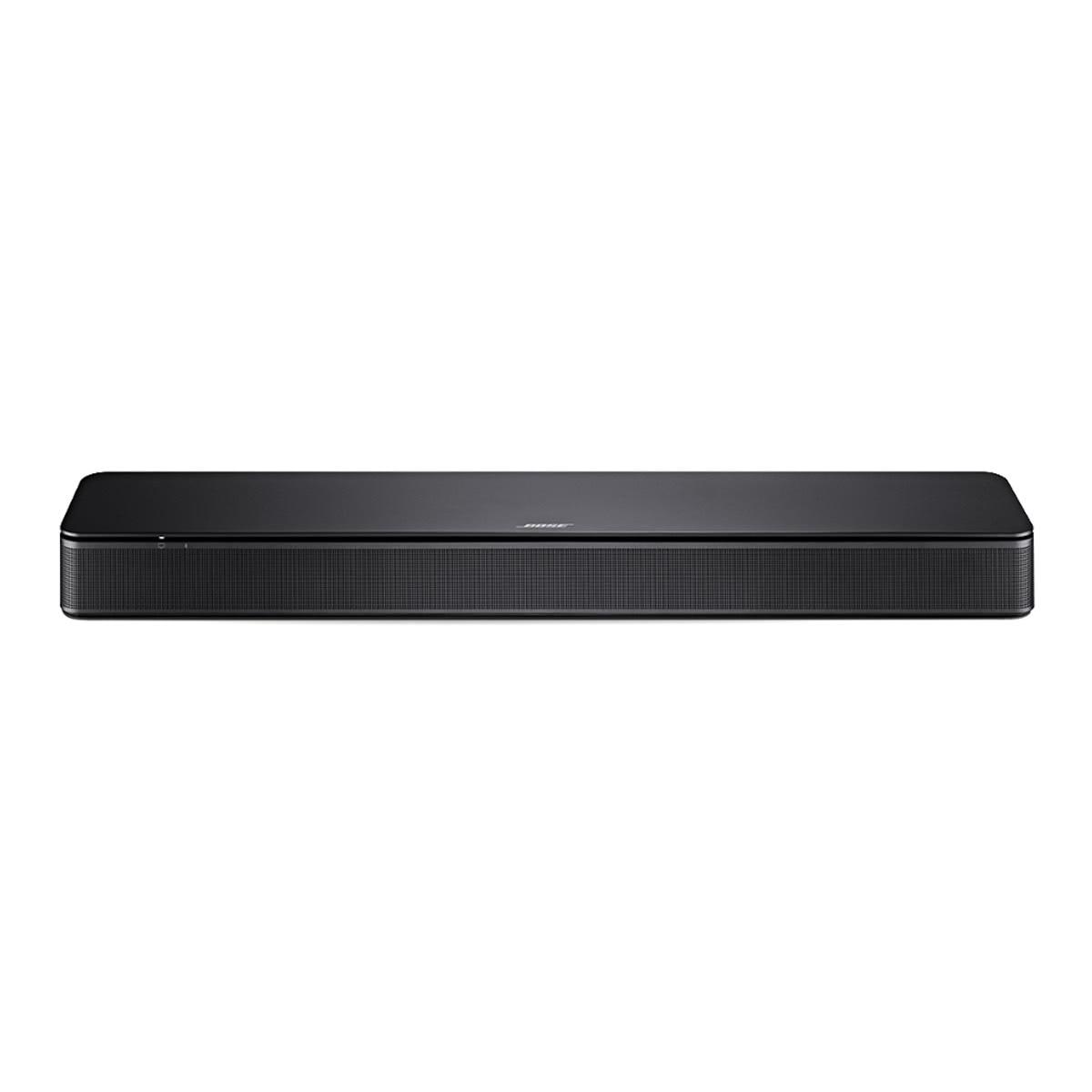
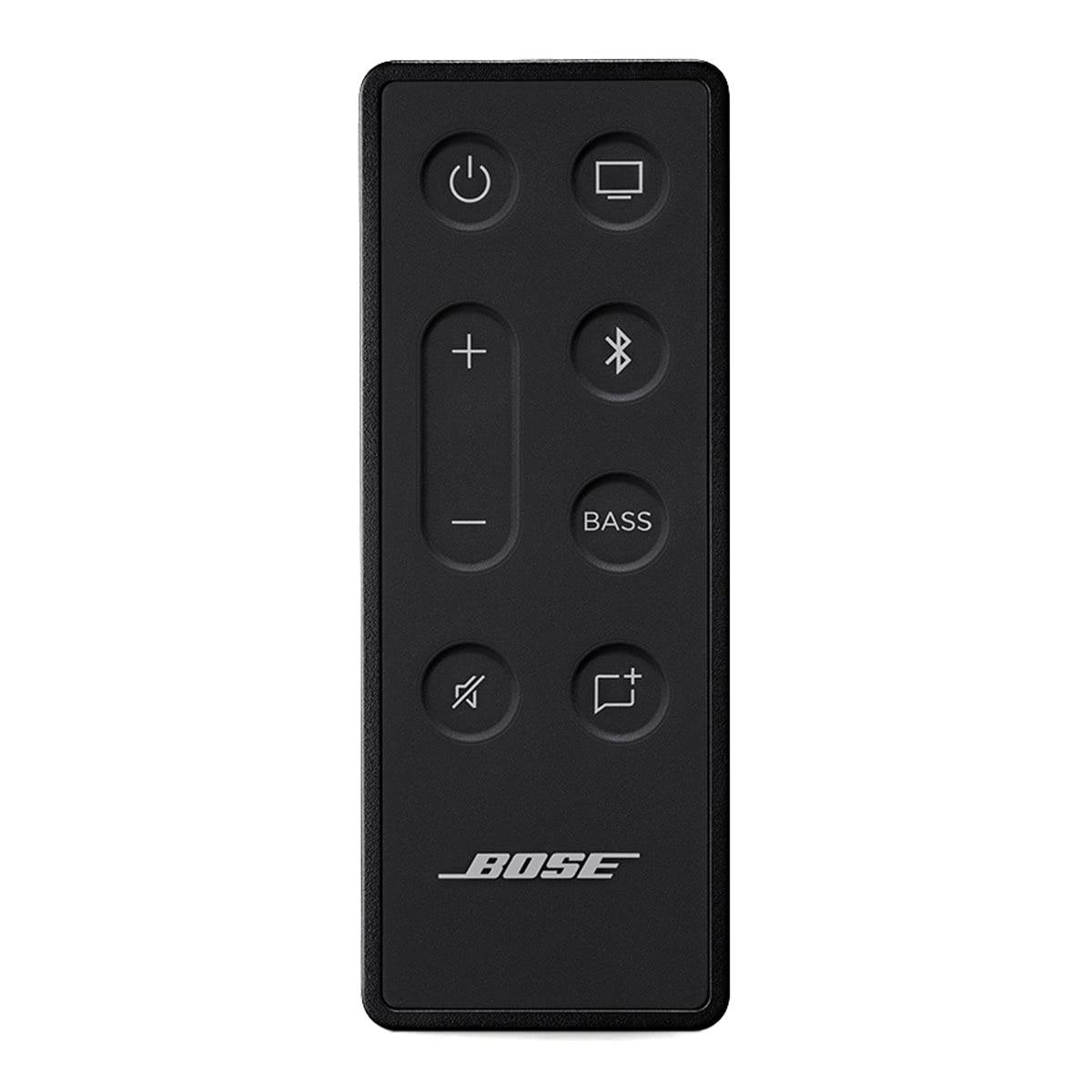













$279.00 Original price was: $279.00.$199.00Current price is: $199.00.
When Bose released the TV Speaker Soundbar in late 2020, they took an interesting approach - instead of cramming in every feature possible, they focused on doing a few things exceptionally well. After extensive testing in various home setups, we've found this strategy really pays off for the right user.
The soundbar market has evolved significantly since this model's release. While many manufacturers are racing to add Dolby Atmos and fancy AI features, there's still a strong need for high-quality stereo sound that just works. The Bose TV Speaker fills this niche perfectly, offering premium audio quality without the complexity that can make some modern soundbars frustrating to use.
In our testing across different room sizes and content types, the sound quality consistently impressed us. Here's what stands out:
The dedicated dialogue mode is more than just marketing - it actively analyzes audio content and enhances speech frequencies. During our movie nights, we found this particularly effective in action scenes where background effects often overwhelm dialogue. The enhancement is subtle but noticeable, making it especially valuable for:
While primarily designed for TV audio, the Bluetooth connectivity makes this a capable music speaker. The stereo separation is impressive for its size, creating a convincing soundstage (the perceived width and depth of the audio). Bass response, while not earth-shaking, is well-balanced and tight - perfect for casual listening sessions.
In our testing across different spaces, we found the Bose TV Speaker performs best in:
The speaker can fill larger spaces, but you'll start to lose some of the clarity at higher volumes.
The connectivity options reflect Bose's focus on simplicity:
HDMI ARC (Audio Return Channel) allows the soundbar to receive audio from your TV through a single cable while also enabling your TV remote to control the soundbar's volume. This reduces cable clutter and simplifies daily use.
The included optical cable ensures compatibility with older TVs or situations where HDMI ARC isn't available. We found the optical connection just as reliable as HDMI, though you'll need to use the Bose remote for volume control.
Bluetooth connectivity has improved since the speaker's release through firmware updates, offering more stable connections and better range. We regularly stream music from phones and tablets without any dropout issues.
While this isn't a traditional home theater soundbar, it can serve as an excellent starting point. The ability to add a Bose Bass Module later means you can start with the basics and expand when budget allows. However, be aware that you won't get:
This is where the soundbar truly shines. The improved clarity over TV speakers is immediately noticeable, especially in:
For casual gaming, the soundbar provides clear audio with minimal lag. However, serious gamers might want to look at options with dedicated gaming modes or surround sound capabilities.
One of the most appealing aspects is the simple setup process. In our testing, we had the soundbar up and running in under 5 minutes:
Wall mounting is possible with the optional bracket, though we found tabletop placement worked best in most setups.
At its price point, the Bose TV Speaker competes with entry-level Dolby Atmos soundbars and more feature-rich budget options. However, it stands out by focusing on sound quality over feature quantity. The build quality is excellent, suggesting many years of reliable service.
After extended use, several aspects become apparent:
The Bose TV Speaker is ideal for:
It's less suitable for:
The Bose TV Speaker represents a focused approach to better TV audio. While it might seem basic compared to feature-laden competitors, its excellent sound quality, ease of use, and expansion options make it a compelling choice for many users.
The lack of advanced features like Dolby Atmos might deter some, but the core performance - particularly dialogue clarity and musical ability - remains impressive. For those wanting better TV audio without complexity, this soundbar continues to be a solid choice in 2024, especially given its proven reliability since its 2020 release.
Consider this your gateway to better TV audio, with the option to grow your system over time. The initial investment provides immediate improvement in sound quality, while the expansion options keep future upgrades open.
Yes, the Bose TV Speaker Soundbar is worth it for users seeking improved TV audio with excellent dialogue clarity in small to medium rooms. While it lacks advanced features like Dolby Atmos, its sound quality and ease of use justify the price, especially for those prioritizing clear dialogue and music playback over complex home theater features.
Yes, the soundbar is compatible with virtually any TV through either HDMI ARC or optical connection. The included optical cable ensures universal compatibility, while HDMI ARC offers simplified control with newer TVs.
No, the Bose TV Speaker Soundbar doesn't provide true surround sound. It's a 2.0 channel system focused on delivering high-quality stereo audio. For those wanting surround sound, you'll need to look at more advanced soundbar models.
The bass performance is good for its size but not room-shaking. The soundbar offers a bass adjustment button and can be enhanced by adding an optional Bose Bass Module 500 or 700 subwoofer through the dedicated bass port.
Yes, the soundbar features Bluetooth 4.2 connectivity, allowing you to stream music directly from smartphones, tablets, or computers. The sound quality for music streaming is notably good, with clear stereo separation.
The Bose TV Speaker performs well with movies, particularly in dialogue clarity. While it won't deliver the immersive experience of a full home theater system, it significantly improves upon TV speakers for movie watching in smaller rooms.
Setup is very straightforward, typically taking less than 5 minutes. Connect power and either HDMI or optical cable to your TV, and you're ready to go. No app or complex configuration is required.
Yes, the soundbar can be wall-mounted using an optional bracket sold separately. Its lightweight design (4.3 lbs) makes it suitable for most wall installations.
Yes, when connected via HDMI ARC, the soundbar can be controlled by your TV remote. It's also compatible with most universal remotes, though some programming may be required.
The soundbar works well for casual gaming, offering clear audio with minimal lag. However, serious gamers might prefer soundbars with dedicated gaming modes or surround sound capabilities. For basic gaming needs in a bedroom or small gaming setup, it's more than adequate.
We've done our best to create useful and informative comparisons to help you decide what product to buy. Our research has used advanced automated methods to create this comparison and perfection is not possible - please contact us for corrections or questions. These are the sites we've researched in the creation of this article: bestbuy.com - projectorscreen.com - forums.audioholics.com - digitaltrends.com - abt.com - crutchfield.com - staples.com - bestbuy.com - pcrichard.com - visions.ca - bose.com - assets.bose.com
| Bose TV Speaker Soundbar |
|---|
| Audio Channels - Determines soundstage and audio separation: 2.0 channels |
| Dialogue Enhancement - Helps clarify speech in movies and TV: Yes, dedicated mode |
| HDMI ARC - Enables TV remote control of soundbar and simplified connection: Yes |
| Bluetooth Version - Affects wireless audio quality and range: 4.2 |
| Bass Expandability - Allows system growth with optional subwoofer: Yes, via 3.5mm connection |
| Dolby/DTS Support - Determines compatibility with modern audio formats: Dolby Digital only |
| Width - Important for TV size compatibility: 23.4 inches |
| Height - Critical for placement under TV without blocking view: 2.2 inches |
| Depth: 4 inches |
| Weight: 4.3 lbs |
| Remote Control: Yes |
| Wall Mounting: Optional bracket available |
| Power Output - Affects maximum volume and clarity: Not specified by manufacturer |
| Warranty: 1 year |
For those considering a more premium option, the $499 Klipsch Flexus Core 200 offers significant upgrades that justify its higher price point. Most notably, it delivers true Dolby Atmos support through dedicated up-firing speakers, creating a more immersive soundstage that extends above the listener. The inclusion of dual built-in 4-inch subwoofers eliminates the need for a separate sub in most rooms, while the horn-loaded tweeter technology provides exceptionally clear dialogue without sacrificing other audio elements. The 3.1.2 channel configuration means you're getting a more theater-like experience, particularly noticeable during action scenes and music-heavy content.
Where the Bose focuses on simplicity, the Flexus Core 200 offers considerably more flexibility and room to grow. The ability to add wireless surround speakers and additional subwoofers means you can start with the soundbar and expand your system over time. While it requires more space and setup attention than the Bose, the payoff in audio quality and features makes it a compelling choice for home theater enthusiasts who want more than just improved TV sound. However, if you're primarily watching news and regular TV programming, these additional features might not justify the price difference for your needs.
🤖 Read Detailed Comparison
👌Klipsch Flexus Core 200 3.1.2 Soundbar Details
💵 See Klipsch Flexus Core 200 3.1.2 Soundbar Price
The $349 Klipsch Flexus Core 100 takes a notably different approach with its dual built-in subwoofers and more powerful 100W amplification. Where the Bose focuses on dialogue clarity, the Klipsch delivers a fuller, more dynamic sound experience that's particularly noticeable during movies and music playback. Its aluminum drivers and thoughtfully designed cabinet provide clearer highs and significantly more bass impact without requiring an external subwoofer. The ability to expand the system with wireless surround speakers and an additional subwoofer also makes it more future-proof for growing home theater needs.
While it commands a higher price point, the Klipsch Flexus Core 100 justifies the premium through its superior overall performance and flexibility. The included app control, multiple sound modes, and custom EQ options provide more fine-tuning possibilities than the Bose's simpler approach. However, this added complexity means it's less plug-and-play than the Bose. For buyers seeking maximum audio performance and expandability in a single soundbar, the Klipsch represents solid value despite costing $150 more. The choice ultimately comes down to whether you prioritize simplicity and dialogue enhancement, or want fuller sound with room to grow your system.
🤖 Read Detailed Comparison
👌Klipsch Flexus Core 100 Soundbar Details
💵 See Klipsch Flexus Core 100 Soundbar Price
The Yamaha SR-B40A ($399) represents a significant step up in terms of audio capabilities and home theater features. Its wireless subwoofer and Dolby Atmos support create a more cinematic experience, with noticeably deeper bass and better spatial audio effects that can make sound appear to come from above and around you. While it costs twice as much as the Bose, the included wireless subwoofer alone helps justify the price difference, delivering impactful low-end frequencies that you can feel during movies and music.
The Yamaha SR-B40A also offers more versatility through its multiple sound modes, app control, and superior Bluetooth 5.1 connectivity. Its higher power output (320W total) makes it better suited for larger rooms and open floor plans, where it can fill the space more effectively. While these additional features mean a slightly more complex setup process, the real-world benefits include more engaging movie watching, better gaming experiences, and more powerful music playback. However, if you don't need these advanced features or the extra bass response, the price premium over the Bose might not be justified for your specific use case.
🤖 Read Detailed Comparison
👌Yamaha SR-B40A 2.1-Channel Sound Bar with Wireless Subwoofer Details
💵 See Yamaha SR-B40A 2.1-Channel Sound Bar with Wireless Subwoofer Price
The Yamaha SR-B30A ($279.95) offers a more feature-rich experience with its Dolby Atmos support and dual built-in subwoofers, eliminating the need for additional bass components. Its wider 35.8-inch design creates a more expansive soundstage, and the inclusion of multiple sound modes (Movie, Gaming, Standard, and Stereo) provides greater flexibility for different content types. The Clear Voice technology matches Bose's dialogue enhancement capabilities, while the built-in subwoofers deliver noticeably more impactful bass for movies and music. The Yamaha's 120W total power output and advanced app control options make it more suitable for larger rooms and users who want to fine-tune their audio experience.
While the Yamaha commands a higher price point, its comprehensive feature set justifies the additional investment for home theater enthusiasts. The Yamaha SR-B30A particularly stands out in movie and gaming scenarios, where its Dolby Atmos support and stronger bass response create a more immersive experience. However, the larger size and more complex feature set might be overkill for users with smaller spaces or those primarily watching news and TV shows. The additional audio processing and built-in subwoofers make it a better value for those seeking a complete sound solution without the need for future upgrades, though it comes at the cost of the simplicity that characterizes the Bose approach.
🤖 Read Detailed Comparison
👌Yamaha SR-B30A Sound Bar with Built-In Subwoofers Details
💵 See Yamaha SR-B30A Sound Bar with Built-In Subwoofers Price
The JBL Bar 700 represents a significant step up in home theater audio capabilities, offering a complete 5.1 surround sound system with Dolby Atmos for $899. Its standout features include detachable wireless rear speakers, a powerful 10-inch subwoofer, and sophisticated audio processing that creates a truly immersive listening experience. The system's PureVoice technology delivers notably clearer dialogue even during complex action scenes, while the dedicated subwoofer provides the kind of deep, impactful bass that's simply impossible with a single soundbar solution.
While the price difference of $700 is substantial, the JBL Bar 700 justifies its premium positioning with significantly better performance across all content types. Movie watchers will appreciate the genuine surround sound effects and overhead Atmos channels, while music listeners benefit from the superior bass response and clearer separation between instruments. The addition of WiFi streaming, multi-room audio capabilities, and automatic room calibration makes it a more future-proof investment for those seeking a complete home theater audio solution. However, buyers should consider whether they have the space and setup requirements to take full advantage of these advanced features.
🤖 Read Detailed Comparison
👌JBL Bar 700 Dolby Atmos 5.1 Soundbar with Subwoofer Details
💵 See JBL Bar 700 Dolby Atmos 5.1 Soundbar with Subwoofer Price
The JBL Bar 300 5.0 ($349.95) represents a significant step up in both features and performance, offering Dolby Atmos and MultiBeam surround sound technology that creates a more immersive listening experience. Its 260-watt output and advanced PureVoice technology provide powerful, room-filling sound while maintaining crystal-clear dialogue. The inclusion of HDMI eARC, WiFi streaming capabilities, and smart features like AirPlay and Chromecast built-in make it a more future-proof option for those looking to integrate their soundbar into a modern home theater setup.
While the higher price point of the JBL Bar 300 requires a bigger investment, the additional features and performance capabilities justify the cost for users who want more than basic TV sound enhancement. The automatic room calibration and virtual surround effects create a more theater-like experience, particularly beneficial in medium to large rooms where the extra power and processing make a noticeable difference. For movie enthusiasts and gamers who value immersive audio and want multiple connectivity options, the JBL offers substantially more value despite its premium price.
🤖 Read Detailed Comparison
👌JBL Bar 300 5.0 Soundbar Details
💵 See JBL Bar 300 5.0 Soundbar Price
The $899 Bose Smart Ultra Soundbar represents a significant step up in both capabilities and price, offering advanced features like Dolby Atmos, AI-powered dialogue enhancement, and sophisticated room calibration. The difference in sound quality is immediately noticeable, with the Smart Ultra creating a much wider, taller soundstage that extends well beyond the TV screen. Its ability to process Dolby Atmos content and create virtual height channels results in a more cinematic experience, while its advanced dialogue mode uses machine learning to ensure clear speech without sacrificing other audio elements.
For those considering the upgrade, the Smart Ultra justifies its premium price through additional features like built-in voice assistants, multi-room audio capability, and WiFi streaming options including AirPlay 2 and Spotify Connect. The soundbar's ADAPTiQ room calibration system optimizes audio for your specific space, delivering more consistent performance regardless of room layout. While the price difference is substantial, the Smart Ultra offers genuine home theater capabilities that the TV Speaker simply can't match. However, this level of performance may be overkill for casual viewers or smaller rooms where the TV Speaker's simpler approach might be more appropriate.
🤖 Read Detailed Comparison
👌Bose Smart Ultra Soundbar with Dolby Atmos Details
💵 See Bose Smart Ultra Soundbar with Dolby Atmos Price
The Sennheiser AMBEO Soundbar Mini ($399) takes a significantly different approach to TV audio, offering virtual 7.1.4 surround sound processing and support for advanced formats like Dolby Atmos and DTS:X. While it commands a higher price, it delivers noticeably better audio quality through its dual built-in subwoofers and sophisticated digital processing. The addition of WiFi connectivity, AirPlay, and Chromecast support also makes it more versatile for streaming music, while its automatic room calibration ensures optimal sound regardless of room layout.
For those considering upgrading from the Bose TV Speaker, the AMBEO Mini's premium features need to be weighed against its higher cost and larger size. While it undoubtedly provides superior audio performance, especially for movies and music, the improvements may not justify the extra expense for casual TV viewers. However, for home theater enthusiasts or those wanting a more immersive audio experience, the AMBEO Mini offers substantially more capability and future-proofing through its regular software updates and advanced format support.
🤖 Read Detailed Comparison
👌Sennheiser AMBEO Soundbar Mini Details
💵 See Sennheiser AMBEO Soundbar Mini Price
The Sony BRAVIA Theater Bar 9 represents a significant step up in both features and price at $1,099, offering Dolby Atmos support through its 7.0.2 channel configuration with 13 speakers. Its standout 360 Spatial Sound Mapping technology creates a dome of immersive audio that extends well beyond the soundbar's physical location, while advanced features like room calibration and AI-powered voice enhancement deliver a more sophisticated listening experience. For gaming and home theater enthusiasts, the HDMI 2.1 connectivity supports next-gen gaming features and higher bandwidth audio formats, while integration with Sony TVs enables acoustic center sync for more precise sound placement.
However, this premium feature set comes with a price tag more than five times higher than the Bose. While the Sony delivers superior audio performance and more immersive sound, the real-world benefit may not justify the cost for casual viewers who primarily watch news, sports, or TV shows. The additional features like WiFi streaming, AirPlay 2 support, and advanced audio processing make more sense for dedicated home theater setups or larger rooms where the spatial audio capabilities can truly shine. For many users, the basic dialogue enhancement and stereo separation of the Bose might be sufficient for their needs without the complexity and cost of the Sony's advanced features.
🤖 Read Detailed Comparison
👌Sony BRAVIA Theater Bar 9 Soundbar Details
💵 See Sony BRAVIA Theater Bar 9 Soundbar Price
The Bose Solo Soundbar Series 2 offers a more budget-friendly alternative at $199, positioning itself as a basic TV audio upgrade with straightforward optical connectivity and Bluetooth streaming. While lacking HDMI-ARC, it maintains Bose's dialogue enhancement technology and provides adequate sound quality for smaller rooms. Its compact design, measuring slightly smaller than the TV Speaker, makes it particularly suitable for bedrooms or secondary viewing areas where space is at a premium.
However, the Solo Series 2 falls short in several areas compared to the TV Speaker's capabilities. The absence of HDMI-CEC means you'll need to use a separate remote, and the audio performance, while decent, doesn't match the TV Speaker's fuller bass response and wider soundstage. The Solo Series 2 also lacks subwoofer expandability and uses more basic construction materials. These limitations make it best suited for users prioritizing simplicity and affordability over advanced features and audio performance, particularly in smaller viewing environments where its more modest output won't be a significant drawback.
🤖 Read Detailed Comparison
👌Bose Solo Soundbar Series 2 Soundbar Details
💵 See Bose Solo Soundbar Series 2 Soundbar Price
The JBL Bar 1000 ($1,139) represents a significant step up into premium home theater territory, offering true surround sound with Dolby Atmos support and innovative detachable wireless rear speakers. While it commands a much higher price point, it delivers a genuinely immersive audio experience that the Bose simply can't match. The included 10-inch wireless subwoofer and four up-firing speakers create a three-dimensional sound field that transforms movie watching and gaming, making it feel more like a commercial theater experience.
For those with larger rooms and bigger budgets, the JBL Bar 1000 justifies its premium price through superior technology and versatility. Its 880-watt system power, advanced room calibration, and support for the latest audio formats make it more future-proof than the Bose. While it requires more setup effort and space, the payoff is substantial for home theater enthusiasts. The ability to stream music via WiFi, AirPlay, and Chromecast also makes it a more capable all-around entertainment system. However, these advanced features may be overkill for users seeking simple TV audio enhancement.
🤖 Read Detailed Comparison
👌JBL Bar 1000 Surround Sound System with 7.1.4 Channel Soundbar, 10" Wireless Subwoofer, Detachable Rear Speakers, and Dolby Atmo Details
💵 See JBL Bar 1000 Surround Sound System with 7.1.4 Channel Soundbar, 10" Wireless Subwoofer, Detachable Rear Speakers, and Dolby Atmo Price
The Samsung HW-B550D takes a notably different approach with its 3.1 channel configuration and wireless subwoofer. While it costs just $31 more, it delivers significantly more powerful and immersive sound thanks to its dedicated center channel for dialogue and separate subwoofer for bass. The inclusion of multiple sound modes, including Game Mode and Night Mode, also provides more flexibility for different content types. The ability to pair multiple Bluetooth devices simultaneously is particularly convenient for households where different people want to stream music.
Where the Samsung really shines is in movie and gaming performance. Its 320W total power output and dedicated subwoofer create the kind of impact and presence that the Bose simply can't match. While the Bose excels at dialogue clarity in a simple package, the Samsung HW-B550D offers a more complete home theater experience. The trade-off comes in the form of a larger footprint - both the wider soundbar and the need to place the subwoofer - and slightly more complex setup. However, for users who have the space and want a more cinematic experience, the Samsung represents excellent value for the modest price premium.
🤖 Read Detailed Comparison
👌Samsung HW-B550D 3.1 Channel Sound Bar Details
💵 See Samsung HW-B550D 3.1 Channel Sound Bar Price
The Samsung B-Series 5.1 Channel Soundbar ($277.99) takes a more comprehensive approach to home theater audio with its true surround sound capabilities and wireless subwoofer. While it costs about $78 more, it delivers noticeably better performance for movies and gaming thanks to its dedicated center channel for dialogue, side-firing speakers for wider sound, and the included subwoofer for impactful bass. The addition of DTS Virtual:X technology and multiple sound modes, including Game Mode and Adaptive Sound, provides more flexibility for different content types.
Where the Samsung really differentiates itself is in creating a more immersive viewing experience. The 5.1 channel configuration places sounds around the viewer, making action scenes more engaging and bringing greater depth to movie soundtracks. While this added capability comes with a slightly more complex setup and larger footprint, the wireless subwoofer maintains reasonable flexibility for placement. For those wanting to build a more serious home theater system, the Samsung B-Series also offers the ability to add wireless rear speakers later, providing a clear upgrade path that the Bose lacks.
🤖 Read Detailed Comparison
👌Samsung B-Series 5.1 Channel Soundbar with Subwoofer Details
💵 See Samsung B-Series 5.1 Channel Soundbar with Subwoofer Price
The Samsung HW-Q990D ($1,999) operates in an entirely different league, offering a complete home theater solution with its 11.1.4 channel configuration, wireless rear speakers, and dedicated subwoofer. Unlike the Bose's basic stereo approach, the Samsung creates a truly immersive sound bubble with Dolby Atmos and DTS:X support, placing sound effects precisely around and above you. Its superior processing power and speaker array deliver dramatically more impactful movie experiences, with overhead effects like helicopter flybys and rain actually sounding like they're coming from above, while the wireless subwoofer provides deep, room-shaking bass that the Bose simply can't match.
While the price difference is substantial, the Samsung justifies its premium positioning for home theater enthusiasts or anyone seeking a more cinematic experience. However, it requires more space for optimal speaker placement and a more involved setup process. The system's additional features like Q-Symphony integration with Samsung TVs, gaming-specific audio modes, and advanced room correction technology make it a more future-proof investment, but these advantages may be overkill for viewers primarily watching news, sports, or casual TV content where the Bose's simpler approach remains perfectly adequate.
🤖 Read Detailed Comparison
👌Samsung HW-Q990D 11.1.4 Channel Sound Bar Details
💵 See Samsung HW-Q990D 11.1.4 Channel Sound Bar Price
The Samsung HW-S700D ($398) takes a more advanced approach to TV audio with its 3.1 channel configuration, including a dedicated center speaker and wireless subwoofer. This setup delivers noticeably better performance for movies and gaming, with clearer dialogue during action scenes and deeper bass impact that the Bose can't match. Its modern feature set, including Wireless Dolby Atmos support, Q-Symphony integration with Samsung TVs, and SpaceFit Sound room calibration, provides more flexibility and better sound optimization for different spaces.
While the Samsung commands a higher price point, it justifies the cost through its superior home theater capabilities and future-proof features. The included wireless subwoofer and dedicated center channel make a real difference in sound quality, especially in larger rooms or when watching action-heavy content. However, this enhanced performance comes with a larger footprint and more complex setup process compared to the Bose's minimalist approach. For those seeking a more immersive audio experience and willing to accommodate a separate subwoofer, the Samsung offers compelling value despite its higher price tag.
🤖 Read Detailed Comparison
👌Samsung HW-S700D 3.1 Channel Slim Soundbar Details
💵 See Samsung HW-S700D 3.1 Channel Slim Soundbar Price
The Sonos Beam Gen 2 operates in a different league at $449, offering significantly more advanced features and superior audio performance. Its standout capabilities include Dolby Atmos support, which creates a more immersive listening experience with compatible content, and a sophisticated multi-driver system that produces notably wider soundstage and better bass response. The addition of smart features like voice control, multi-room audio, and AirPlay 2 support makes it more versatile as an all-around audio solution, not just a TV speaker. The Trueplay room calibration feature also helps optimize sound for your specific space, something the Bose TV Speaker can't match.
While the Sonos Beam Gen 2 costs more than twice as much, it justifies the premium for users who want a more future-proof solution. The ability to expand into a full wireless surround system by adding rear speakers and a subwoofer is particularly appealing for home theater enthusiasts. Regular software updates continue to add features and improvements, making it feel like a long-term investment rather than just a simple TV audio upgrade. However, if these advanced features aren't important to you, or if you're primarily focused on improving dialogue clarity in a smaller room, the price difference might be hard to justify over the Bose TV Speaker's more focused approach.
🤖 Read Detailed Comparison
👌Sonos Beam Gen 2 Soundbar Details
💵 See Sonos Beam Gen 2 Soundbar Price
The Polk Audio MagniFi Max AX ($799) represents a significant step up in both capabilities and price, offering a complete home theater solution rather than just TV audio enhancement. With its 3.1.2 channel configuration, including upward-firing speakers for Dolby Atmos, and a wireless subwoofer, it delivers a truly immersive audio experience that the Bose simply isn't designed to match. The inclusion of multiple HDMI inputs, streaming capabilities via Wi-Fi, and support for modern audio formats like DTS:X makes it a more versatile entertainment hub.
While the Polk MagniFi Max AX costs four times as much, it justifies the premium for users seeking cinema-quality sound. Its dedicated center channel and advanced audio processing deliver superior dialogue clarity at all volumes, while the wireless subwoofer provides the deep bass impact that movie enthusiasts crave. The additional features like AirPlay 2 and Chromecast support make it more future-proof, though these advanced capabilities also mean a more complex setup process compared to the Bose's plug-and-play simplicity.
🤖 Read Detailed Comparison
👌Polk Audio MagniFi Max AX 3.1.2 Soundbar Details
💵 See Polk Audio MagniFi Max AX 3.1.2 Soundbar Price
The Sennheiser AMBEO Soundbar Plus ($1,499) represents a significant step up in both capabilities and price, offering a complete home theater solution in a single unit. Its sophisticated virtual 7.1.4 surround sound processing creates a convincing three-dimensional soundstage that can rival multi-speaker setups, while built-in room calibration optimizes the sound for your specific space. For those seeking cinema-quality audio without the complexity of multiple speakers, the AMBEO's Dolby Atmos support and advanced audio processing deliver an impressive alternative to traditional home theater systems.
While the price difference is substantial, the AMBEO Soundbar Plus justifies its premium positioning with additional features like WiFi streaming, voice assistant integration, and a powerful app-based control system. The built-in woofers provide robust bass response without requiring an external subwoofer, though one can be added for even more impact. For larger rooms or viewers who prioritize immersive sound quality, the AMBEO represents a significant upgrade path that delivers a more sophisticated audio experience, albeit at a price point that pushes it into a different category entirely from the Bose TV Speaker.
🤖 Read Detailed Comparison
👌Sennheiser AMBEO Soundbar Plus Home Theater System Details
💵 See Sennheiser AMBEO Soundbar Plus Home Theater System Price
The Sony HT-A3000 ($498) represents a significant step up in both capabilities and price, offering a more sophisticated home theater experience with its 3.1 channel configuration and Dolby Atmos support. Its built-in dual subwoofers deliver noticeably deeper bass without requiring additional purchases, and the dedicated center channel provides superior dialogue clarity during complex movie soundtracks. The inclusion of WiFi streaming, multi-room audio capabilities, and voice assistant support makes it a more versatile entertainment hub that extends beyond basic TV sound enhancement.
However, these advanced features come with added complexity and a price tag that's more than double the Bose. The Sony HT-A3000 makes sense for those seeking a more cinematic experience or planning to use their soundbar for music streaming and home theater purposes. While it offers better overall sound quality and more features, many users might find these additional capabilities unnecessary if their primary goal is simply to improve their TV's audio. The Sony's larger size and more involved setup process also make it a less appealing option for those valuing simplicity and space efficiency.
🤖 Read Detailed Comparison
👌Sony HT-A3000 3.1ch Dolby Atmos Soundbar Details
💵 See Sony HT-A3000 3.1ch Dolby Atmos Soundbar Price
The Sonos Arc ($564.44) represents a significant step up in both capabilities and audio performance, offering a premium solution for those seeking theater-like sound. Its 11-driver array, including upward-firing speakers for Dolby Atmos, creates a notably more immersive experience with true 3D audio positioning. The Arc's Trueplay room calibration technology automatically optimizes the sound for your specific space, while built-in voice assistants and Apple AirPlay 2 support add convenient smart features that the Bose lacks. This sophisticated approach to home audio delivers tangible benefits for movies and TV shows, with explosions that rumble, dialogue that remains crystal clear, and ambient sounds that truly surround you.
While the Sonos Arc commands a premium price point, it justifies the investment through its expandability and future-proof features. The ability to wirelessly add a Sonos Sub and rear speakers creates a genuine 5.1.2 surround system, while regular software updates continue to enhance functionality. The Arc's wider soundstage and more powerful amplification fill larger rooms more effectively than the Bose, making it particularly well-suited for dedicated home theater spaces or open-concept living areas. However, buyers should consider whether they'll take advantage of these advanced features and if their TV supports HDMI eARC to fully utilize the Arc's Dolby Atmos capabilities before making the investment.
🤖 Read Detailed Comparison
👌Sonos Arc Wireless Sound Bar with Dolby Atmos, Apple AirPlay 2, and Built-in Voice Assistant (White) Details
💵 See Sonos Arc Wireless Sound Bar with Dolby Atmos, Apple AirPlay 2, and Built-in Voice Assistant (White) Price
The $279 Sonos Ray distinguishes itself with superior audio performance and integration into the broader Sonos ecosystem, though it comes at a higher price point than the Bose. Its standout feature is the ability to expand into a complete 5.1 surround system by adding matching speakers and a subwoofer over time. The Ray also delivers more refined sound quality with better stereo separation and a wider soundstage, making it particularly impressive for both movie watching and music playback. While it lacks Bluetooth, its Wi-Fi connectivity and AirPlay 2 support provide higher quality streaming options and enable multi-room audio capabilities.
However, the Ray's optical-only connectivity might be a limitation for some users compared to the Bose's HDMI ARC option, and its setup process requires more initial configuration through the Sonos app. The Sonos Ray justifies its premium price through better overall sound quality and future expandability, but these advantages may not matter to users seeking a simple TV audio upgrade. For those who appreciate better audio fidelity and might want to build a larger system later, the Ray's additional investment provides tangible benefits, though its lack of Bluetooth and HDMI connectivity should be considered against your specific needs.
🤖 Read Detailed Comparison
👌Sonos Ray Soundbar Details
💵 See Sonos Ray Soundbar Price
The Samsung HW-Q800D represents a significant step up in home theater capability, offering Dolby Atmos support through dedicated upfiring speakers and a wireless subwoofer that delivers powerful, room-filling bass. Where the Bose focuses on simplicity and dialogue enhancement, the Samsung creates a more immersive experience with its 5.1.2 channel configuration, room correction technology, and advanced features like Q-Symphony for Samsung TV owners. The included subwoofer and height channels make a substantial difference when watching movies or playing games, adding impact to action scenes and creating a more three-dimensional soundstage.
At more than twice the price, the Samsung needs to justify its premium position, and for many home theater enthusiasts, it does. The additional power (360W vs 50W), superior bass response, and more sophisticated processing make it a more future-proof choice for dedicated media rooms or primary TV viewing areas. However, this comes with increased complexity in setup and the need for more space. While the Samsung delivers a more complete home theater experience, buyers should consider whether they'll take advantage of its advanced features and whether their room size and viewing habits justify the additional investment.
🤖 Read Detailed Comparison
👌Samsung HW-Q800D 5.1.2 Channel Soundbar Details
💵 See Samsung HW-Q800D 5.1.2 Channel Soundbar Price
The Sonos Arc Ultra ($999) represents a significant step up in both capabilities and price, offering Dolby Atmos support through its 9.1.4 channel configuration and advanced Sound Motion woofer technology. Where the Bose focuses on basic stereo enhancement, the Arc Ultra creates a true home theater experience with sounds that appear to come from all directions, including overhead. Its wider soundstage, more powerful bass response, and ability to integrate with wireless rear speakers and subwoofers make it a more complete solution for dedicated home theater enthusiasts.
However, this premium performance comes at a price that's five times higher than the Bose TV Speaker. The Arc Ultra also requires more setup effort, including app-based room calibration, and its larger size demands more space and a bigger TV for proper placement. While its smart features, regular software updates, and multi-room audio capabilities add significant value, these advanced features may be overkill for viewers primarily watching news, sports, and regular TV programming. The Sonos Arc Ultra makes sense for those seeking a premium audio experience and planning to expand their system over time, but its price point and features may exceed what many users need for everyday TV viewing.
🤖 Read Detailed Comparison
👌Sonos Arc Ultra Dolby Atmos Soundbar Details
💵 See Sonos Arc Ultra Dolby Atmos Soundbar Price
The $1,299 LG S90TR represents a significant step up in both features and performance, offering a complete home theater audio solution rather than just TV sound enhancement. With its 7.1.3 channel configuration, including dedicated surround speakers and a wireless subwoofer, it creates a truly immersive listening experience that the Bose TV Speaker simply can't match. The addition of Dolby Atmos and DTS:X support means you'll hear sound from all directions, including above, while the AI room calibration ensures optimal performance in any space. The included subwoofer delivers impactful bass that brings action scenes to life, and the wireless rear speakers complete the surround sound experience without requiring complex wiring.
While the price difference is substantial, the LG S90TR delivers value for those seeking a premium home theater experience. Its additional features like Wi-Fi streaming, HDMI eARC support, and gaming-oriented audio modes make it more versatile than basic soundbars. However, this added capability comes with increased complexity in setup and operation. For those who primarily want clearer TV dialogue and improved stereo sound, the Bose TV Speaker remains a solid choice at a fraction of the cost. The LG system makes sense for larger rooms where its power and surround capabilities can be fully appreciated, and for users who want the latest audio technology without installing a traditional component-based home theater system.
🤖 Read Detailed Comparison
👌LG S90TR 7.1.3 Channel Soundbar with Wireless Subwoofer and Rear Speakers - Soundbar Details
💵 See LG S90TR 7.1.3 Channel Soundbar with Wireless Subwoofer and Rear Speakers - Soundbar Price
The LG S95TR ($1,299) represents a completely different class of soundbar, offering a premium home theater experience with its 9.1.5 channel configuration and Dolby Atmos support. While significantly more expensive, it delivers immersive surround sound through wireless rear speakers and up-firing drivers that create height channels for overhead effects. The included wireless subwoofer and advanced audio processing make it particularly strong for movie enthusiasts and gamers who want cinema-quality sound at home.
For those with larger rooms and bigger budgets, the LG S95TR offers substantially more features and better overall performance than the Bose. Its ability to fill large spaces with rich, detailed sound and create true surround effects makes it a more future-proof investment. However, the higher price tag and more complex setup mean it's best suited for dedicated home theater enthusiasts who will appreciate its advanced capabilities, rather than those seeking a simple TV audio upgrade.
🤖 Read Detailed Comparison
👌LG S95TR 9.1.5 Channel Soundbar with Dolby Atmos Soundbar Details
💵 See LG S95TR 9.1.5 Channel Soundbar with Dolby Atmos Soundbar Price
The Polk Audio Signa S4 ($349) represents a significant step up in home theater capabilities, offering a full 3.1.2 channel configuration with Dolby Atmos support and a wireless subwoofer included. Its dedicated center channel and VoiceAdjust technology provide more sophisticated dialogue enhancement than the Bose, while the upward-firing speakers create an immersive sound field that extends above the listening area. This makes a noticeable difference when watching modern movies and TV shows that support Dolby Atmos, delivering a more theater-like experience that the Bose TV Speaker simply can't match.
While the Polk Signa S4 commands a higher price point, it delivers considerably more value for home theater enthusiasts. The included wireless subwoofer alone adds significant impact to movie soundtracks and music, while the additional audio processing features like Movie and Night modes offer more flexibility for different listening scenarios. However, this added capability comes with increased complexity in both setup and operation, and the larger physical footprint might not suit smaller spaces where the Bose TV Speaker excels. For those seeking a more complete home theater solution and don't mind the extra investment, the Signa S4's superior audio performance and feature set make it a compelling upgrade path.
🤖 Read Detailed Comparison
👌Polk Audio Signa S4 Dolby Atmos Soundbar with Wireless Subwoofer Details
💵 See Polk Audio Signa S4 Dolby Atmos Soundbar with Wireless Subwoofer Price
The TCL Q85H Q Class Sound Bar System represents a significant step up in home theater capability, offering a complete 7.1.4 surround sound experience with dedicated wireless surround speakers and up-firing Dolby Atmos channels. At $599.99, it delivers cinema-quality audio with precisely placed sound effects, room-shaking bass from its wireless subwoofer, and immersive height effects that create a dome of sound around viewers. The system's AI-powered room calibration ensures optimal performance regardless of room layout, while its multiple HDMI inputs and advanced audio processing support make it future-proof for modern home theater setups.
While the price difference is substantial, the TCL Q85H justifies its higher cost for users seeking true home theater performance. Its ability to reproduce the latest Dolby Atmos and DTS:X soundtracks, combined with gaming-optimized audio modes and powerful music reproduction, makes it a versatile entertainment hub rather than just a TV sound enhancer. However, this performance comes with greater space requirements and setup complexity compared to the Bose's streamlined approach, making it better suited for dedicated home theater spaces or larger rooms where its immersive capabilities can be fully appreciated.
🤖 Read Detailed Comparison
👌TCL Q85H Q Class 7.1.4 Channel Sound Bar System Details
💵 See TCL Q85H Q Class 7.1.4 Channel Sound Bar System Price
The Sony HT-A5000 ($640) represents a significant step up in both capabilities and price, offering a true home theater experience with its 5.1.2 channel configuration and Dolby Atmos support. Its sophisticated audio processing includes room correction technology that optimizes sound for your specific space, while the built-in subwoofers deliver substantially more powerful bass without requiring additional components. The inclusion of up-firing speakers creates a more immersive soundstage that extends overhead, making movies and games notably more engaging than what's possible with basic two-channel systems.
While the Sony HT-A5000 demands a larger investment, it justifies its premium price through future-proof features like 8K passthrough, multiple HDMI inputs, and comprehensive streaming options including Chromecast and AirPlay 2. Its ability to decode advanced audio formats and create a convincing surround sound field makes it more suitable for dedicated home theater setups or larger rooms where its powerful output and sophisticated processing can truly shine. However, this additional capability comes with increased complexity in both setup and daily use, making it a better fit for tech-savvy users who will appreciate and utilize its advanced features.
🤖 Read Detailed Comparison
👌Sony HT-A5000 5.1.2 Channel Home Theater Soundbar Details
💵 See Sony HT-A5000 5.1.2 Channel Home Theater Soundbar Price
$5,997.99 Original price was: $5,997.99.$5,797.99Current price is: $5,797.99.
$99.99 Original price was: $99.99.$69.99Current price is: $69.99.
$79.98 Original price was: $79.98.$58.95Current price is: $58.95.

